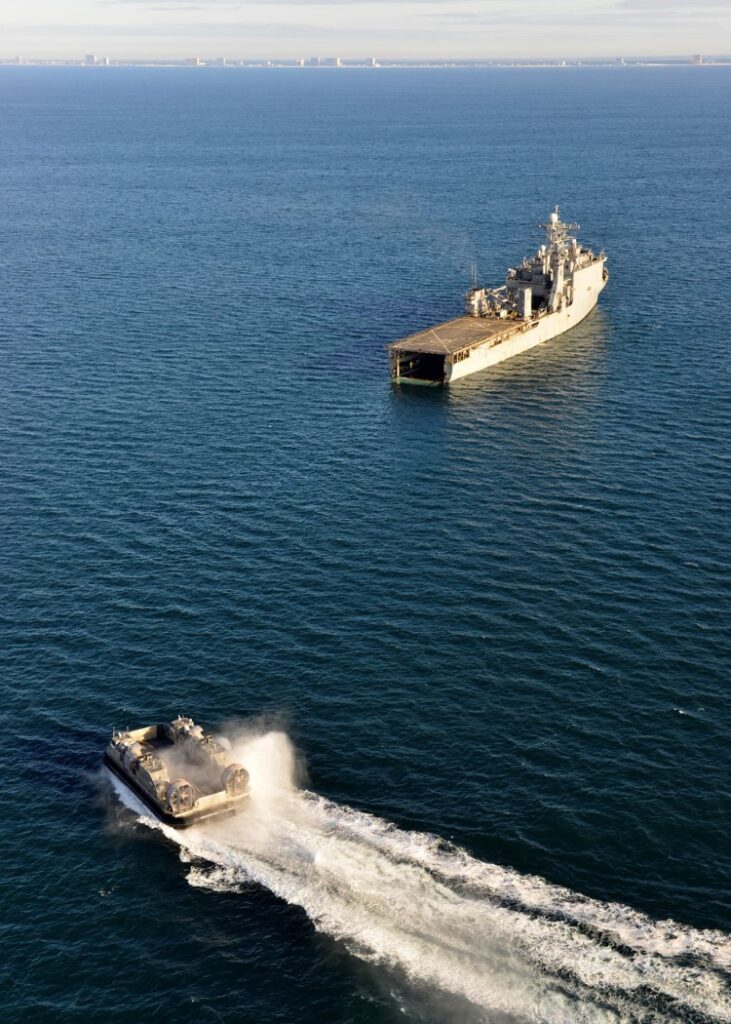
ARLINGTON, Va. — The Navy is set to deliver the first two operational next-generation landing craft, air cushion 110-class ship-to-shore connectors on Feb. 11 to an assault craft unit in Little Creek, Virginia, Navy officials said.
The two SSCs are on board the dock landing ship USS Carter Hall (LSD 50) inside the ship’s well deck en route to Joint Expeditionary Base Little Creek-Fort Story, Virginia, after having completed well deck interoperability testing in Panama City, Florida. The two craft will be delivered to ACU-4, which has long operated the SSC’s predecessor, the LCAC 01 class, said Thomas Rivers, executive director, Amphibious, Auxiliary and Sealift Ships, Program Executive Office-Ships, speaking Feb. 10 at the National Defense Industrial Association’s Expeditionary Warfare Conference.
Four LCAC 100s have been delivered to the Navy so far, with delivery of three or four more expected in 2022, said Capt. Scot Searles, program manager, Amphibious Assault and Connectors Programs, PEO-Ships, also speaking at the conference. A total of 24 are on contract, with 12 under construction.
Rivers said initial operational capability of the LCAC 100 class will be reached when the ACU is equipped with six craft.
Capt. Kevin Lane, the Navy’s resource sponsor for Amphibious Warfare, also speaking at the conference, said IOC is expected in 2023, with first deployment of the craft expected in 2024.
The deck operability testing “was conducted as part of the first phase of ship interface testing and helped validate user requirements by performing multiple well deck entries and exits from USS Carter Hall,” said Team Ships Public Affairs in a release. “LCACs are built with similar configurations, dimensions, and clearances to the legacy LCAC — ensuring the compatibility with existing well deck equipped amphibious ships.”
“The success of the well deck testing and other recent evolutions validates these modernized craft will be a game changer for the Navy-Marine Corps team as they execute various missions in the maritime domain,” Searles said.
The test event, a collaboration between, PEO Ships, USS Carter Hall, Naval Surface Warfare Center Panama City Division and other stakeholders, was the culmination of months of preparation. The testing also has historical significance, as Panama City is the location of the Navy’s Air Cushion Vehicle Center of Excellence with the first-ever well deck operations occurring off Panama City in 1985 between legacy LCAC 01 and USS Whidbey Island (LSD 41).






